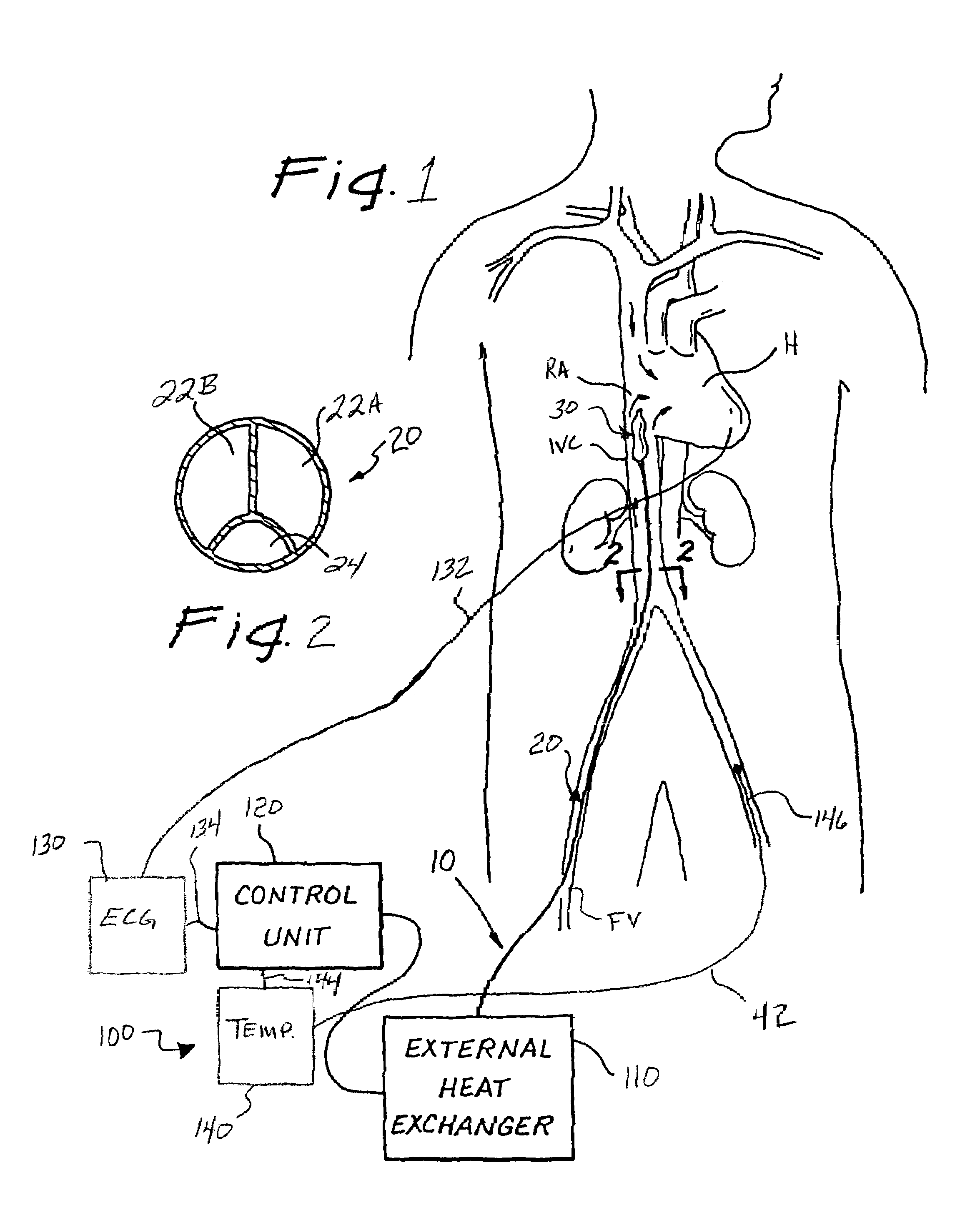Methods and systems for reducing substance-induced renal damage
a technology of kidney damage and systemic damage, applied in the field of medical devices and methods, can solve the problems of causing kidney damage, reducing so as to reduce the severity of renal damage, reduce or avoid the effect of substance-induced renal damag
- Summary
- Abstract
- Description
- Claims
- Application Information
AI Technical Summary
Benefits of technology
Problems solved by technology
Method used
Image
Examples
Embodiment Construction
[0043]The following detailed description is provided for the purpose of describing only certain embodiments or examples of the invention and is not intended to describe all possible embodiments and examples of the invention. For example, although the description herein describes an endovascular catheter device having a heat exchange region used to cool a patient to reduce contrast medium-induced nephropathy, the catheter device may be used to cool a patient to reduce injury to the kidneys caused by any agent or injury, or injury that may be exacerbated by normal or high metabolism. The cooling device may provide protection to the kidneys by reducing metabolic demands of the renal tissue and reducing the generation of agents, such as free radicals, that may contribute to cellular damage. In addition, although the catheter device of the invention is illustrated in position proximate to a patient's heart, the catheter device may be used near any organ or organs that may benefit from te...
PUM
 Login to View More
Login to View More Abstract
Description
Claims
Application Information
 Login to View More
Login to View More - R&D
- Intellectual Property
- Life Sciences
- Materials
- Tech Scout
- Unparalleled Data Quality
- Higher Quality Content
- 60% Fewer Hallucinations
Browse by: Latest US Patents, China's latest patents, Technical Efficacy Thesaurus, Application Domain, Technology Topic, Popular Technical Reports.
© 2025 PatSnap. All rights reserved.Legal|Privacy policy|Modern Slavery Act Transparency Statement|Sitemap|About US| Contact US: help@patsnap.com



